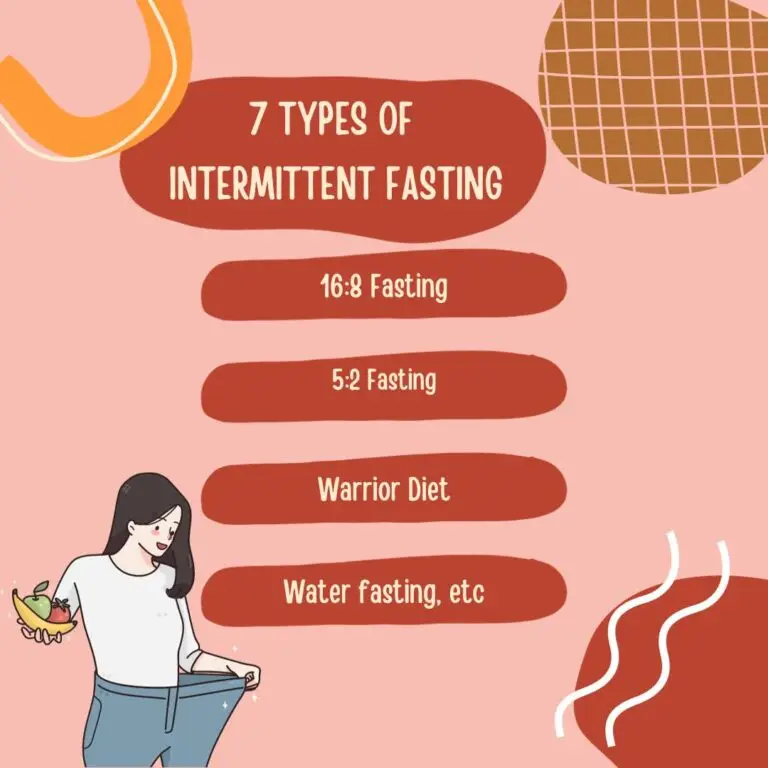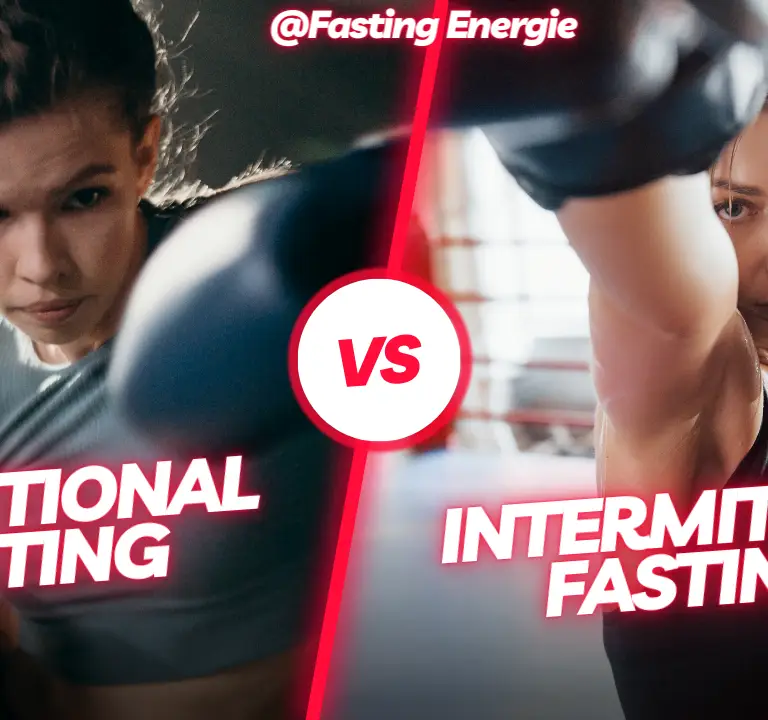Intermittent Fasting vs. Fasting-Mimicking Diets: Which One Burns Fat Faster? Find Out Now!
The quest for optimal health and wellness often leads us to various dietary strategies. Among the most talked-about approaches in recent years are Intermittent Fasting (IF) and Fasting-Mimicking Diets (FMD). While both employ fasting to some degree, they are distinct in their methodologies and effects. So, what exactly are IF and FMD, and how do they compare? Let’s dive in.
Table of Contents

Introduction
Overview of Fasting Trends in Health and Wellness
Fasting has become a popular fad in the health and wellness world, with benefits including increased longevity, mental clarity, and weight loss. Various types of fasting, such as intermittent fasting and fasting-mimicking diets, have gained popularity for their distinct ways to reaping these benefits. Fasting’s appeal extends beyond calorie restriction; it combines ancient practices with modern scientific support, altering everything from metabolic pathways to hormonal balance.
Purpose of Exploring Intermittent Fasting and Fasting-Mimicking Diets
The purpose of this study is to examine and evaluate two common fasting methodologies—intermittent fasting and fasting-mimicking diets—in order to better understand their mechanisms, advantages, and applicability for various lifestyle needs. By looking into various strategies, the site hopes to provide readers with knowledgeable advice on how to choose the best approach depending on their health goals, lifestyle choices, and potential limitations.
Understanding Intermittent Fasting
Definition and Fundamental Principles of Intermittent Fasting
Intermittent fasting (IF) is a diet strategy that alternates between periods of fasting and eating. Intermittent fasting differs from regular diets in that it focuses on when to eat rather than what. The main premise of IF is to create time windows during which calorie intake is reduced or eliminated in order to induce periods of fasting. This pattern can have a major impact on physiological activities as metabolic flexibility, oxidative stress reduction, and lipid metabolism.
Popular Intermittent Fasting Methods
- 16/8 Method: This strategy consists of fasting for 16 hours a day and eating all meals within an 8-hour window. It is popular due to its simplicity and fit with daily routines.
- 5:2 Diet: This technique comprises eating regularly five days a week and limiting calories to 500-600 per day on the other two days. It is preferred because it allows for greater flexibility on a few days per week.
- Eat-Stop-Eat: This strategy entails one or two 24-hour fasts per week in which no food is consumed. It is one of the more intense forms of intermittent fasting, yet it allows for a great deal of freedom on non-fasting days.
Exploring Fasting-Mimicking Diets
The Concept and Development of Fasting-Mimicking Diets
The fasting-mimicking diet (FMD) is a relatively recent concept created by Dr. Valter Longo and his team at the University of Southern California. This diet simulates the effects of water-only fasting by allowing participants to consume a low-calorie diet that fools the body into fasting mode. The goal is to get the benefits of fasting—such as reduced inflammation, increased stress resistance, and higher stem cell regeneration—without undergoing complete food deprivation.
Key Characteristics and dietary Guidelines
Fasting-mimicking diets normally last four to seven days and should be done once a month. They follow a plant-based diet that is low in proteins, carbohydrates, and saturated fats but high in unsaturated lipids. Calorie consumption is often restricted to 40-50% of normal daily calorie requirements. Key features include:
- Nutritional Composition: High in healthy fats and low in calories and protein to lower IGF-1 (Insulin-like Growth Factor 1), glucose, and insulin levels.
- Cycles: Recommended to be done on a regular basis (e.g., once a month) for a few days to achieve cumulative and long-term results.
Comparison of Intermittent Fasting vs. Fasting-Mimicking Diets
Differences between Approach and Methodology
Intermittent fasting (IF) and fasting-mimicking diets (FMD) both seek to maximise the physiological benefits of fasting, but their techniques differ greatly.
- Intermittent Fasting: IF involves cycling between periods of eating and fasting. The methodology ranges from daily fasting (16/8 method) to weekly 24-hour fasts (Eat-Stop-Eat). Individuals can adopt a routine that works best for their lifestyle, focusing on when to eat rather than what to eat.
- Fasting-Mimicking Diets: FMD entails following specifically designed low-calorie diets for a set number of days (typically 4-7 every month). These diets are intended to imitate the effects of a water fast, fooling the body into fasting mode, with a precise macronutrient composition that promotes favourable benefits without complete abstinence from eating.
Nutritional Intake and limitations
- Intermittent Fasting: No specific food limitations apply during eating periods. The primary focus is on meal timing. This can make adherence easier, but it may also demand self-discipline to maintain balanced eating.
- Diets that mimic fasting: These diets are highly organised, with particular guidelines for calorie consumption and food composition—usually high in unsaturated fats and low in proteins and carbohydrates. This stringent regimen was scientifically designed to generate protective, regenerative, and rejuvenating changes in the body.
Health Benefits
Benefits of Intermittent Fasting
- Weight Loss: Limiting eating windows reduces calorie intake and aids in long-term weight loss.
- Improved Metabolic Health: IF increases insulin sensitivity and can reduce inflammation indicators, lowering the risk of chronic diseases like type 2 diabetes and cardiovascular disease.
- Longevity: Several studies have found that fasting on a regular basis increases lifespan, most likely due to improved metabolic health and lower oxidative stress.
Benefits of Fasting-Mimicking Diets
- Cellular Renewal: FMD promotes autophagy, which cleanses cells of damaged components, leading to enhanced function and longevity.
- Reduced Inflammation: FMD has been demonstrated to reduce systemic inflammation, which lowers the risk of chronic diseases.
- Longevity: FMD, like IF, has been associated with increased longevity. The diet’s capacity to imitate the effects of calorie restriction is essential to its potential for life extension.
Challenges and Considerations
Challenges of Intermittent Fasting
- Managing hunger and cravings during fasting can be difficult, especially in the early stages.
- Social and Lifestyle Disruptions: Meal scheduling limitations might conflict with social events, necessitating considerable lifestyle changes.
Difficulties and Precautions of Fasting-Mimicking Diets
- Accessibility and Cost: FMD might be more expensive and difficult to follow than regular diet plans due to the need to purchase specific meal kits or adhere to tight dietary requirements.
- Medical Supervision: Because of its restrictive nature and major modification of usual eating patterns, FMD should be done under medical supervision, particularly for people with underlying health issues.
Suitability and Personalisation
Which Diets Suit Different Lifestyle Needs
The choice between intermittent fasting (IF) and fasting-mimicking diets (FMD) is heavily influenced by an individual’s daily schedule, career commitments, and social life.
- Intermittent Fasting is more adaptable and can be tailored to most lifestyles. It’s perfect for people who want to control when they eat rather than what they eat. This makes IF ideal for persons who have social or family obligations that require meals, or who do not want to buy special foods or supplements.
- Fasting-Mimicking Diets necessitate a commitment to eating specific sorts of foods and strictly regulating caloric intake for several consecutive days each month. This can be more difficult to implement, but it may be preferred for people seeking regulated dietary programmes with scientifically established nutrient ratios, especially those who struggle with discipline during open eating windows.
Tailoring Each Approach to Individual Health Goals –
- Weight Loss: IF may be a more accessible and sustainable method for long-term weight management.
- Cellular Repair and Longevity: FMD may be more successful because it is designed to cause deep physiological changes similar to prolonged fasting.
- Specific Health Issues: People with particular medical disorders, such as diabetes or metabolic syndrome, may find IF more adaptive and easier to incorporate into their current dietary management strategies.
Scientific Evidence and Studies
A review of the research supporting each fasting method
Numerous studies have demonstrated the benefits of IF, including improvements in lipid profiles, insulin sensitivity, and brain function. While FMD research is relatively young, it has shown considerable results in terms of longevity, disease risk reduction, and improvement in ageing markers.
Comparative Studies on Efficacy and Safety
Comparative research has started to appear, but more is needed. Current research indicates that both strategies promote metabolic health, although FMD may be more effective in emulating the cellular benefits of prolonged fasting due to its stringent food composition.
Expert opinions and recommendations
Insights from Nutritionists and Health Experts
When deciding on a fasting strategy, health practitioners often emphasise the significance of taking into account one’s personal health and lifestyle. They advocate starting carefully, especially with IF, and seeing a healthcare physician before pursuing FMD due to its more severe nature.
Practical Tips for Safely Implementing Each Diet.
- Hydration: Both diets require it to maintain overall health and manage hunger.
- Gradual Introduction: For FMD, starting with lesser versions of calorie restriction may help the body acclimatise without causing undue stress.
- Monitoring Body Response: Regularly checking in with oneself or a professional to examine how the body is reacting to the fasting protocol.
Conclusion
A summary of key differences and benefits
While both IF and FMD provide considerable health benefits, their applicability is determined by each individual’s lifestyle, health status, and aspirations. IF allows for greater flexibility and ease of incorporation into normal life, but FMD delivers organised benefits similar to prolonged fasting.
Advice on Choosing the Best Fasting Strategy for You
When choosing a fasting technique, think about your daily routine, health goals, and ability to stick to dietary limitations. Experimenting carefully under professional supervision can help discover the most successful and long-term technique, ensuring that the chosen method not only suits your lifestyle but also improves your entire health.
Frequently Asked Question
u003cstrongu003eIs fasting mimicking better than fasting?u003c/strongu003e
Fasting mimicking can be more accessible and manageable than traditional fasting since it allows the intake of limited food, which can reduce the risk of nutrient deficiencies and lower the physical and psychological stress often associated with complete fasting.
u003cstrongu003eIs the fasting mimicking diet safe?u003c/strongu003e
The fasting mimicking diet is generally considered safe for healthy individuals. However, it should be approached cautiously by pregnant women, individuals with medical conditions, or those on medication, ideally under medical supervision.
u003cstrongu003eHow much weight can you lose on the fasting mimicking diet?u003c/strongu003e
Weight loss on the FMD can vary, but individuals might expect to lose between 2 to 5 kilograms (4.4 to 11 pounds) during a 5-day cycle, depending on their initial body composition and adherence to the diet’s guidelines.
u003cstrongu003eFoods to Include in the Fast-Mimicking Dietu003c/strongu003e
The FMD typically includes nutrient-dense, plant-based foods that are low in calories, proteins, and sugars but high in unsaturated fats. Examples include nuts, olives, leafy greens, beans, whole grains, and vegetable-based soups.
u003cstrongu003eWhat is the duration fasting mimicking diet?u003c/strongu003e
The typical cycle of the fasting mimicking diet lasts for 5 days. This can be repeated several times a year depending on individual goals and health responses.
u003cstrongu003eCan you drink coffee on a fasting mimicking diet?u003c/strongu003e
It is recommended to avoid coffee or consume it black and without sweeteners during the fasting mimicking diet to maintain the intended nutrient profile and fasting state effects.
u003cstrongu003eDoes the fasting mimicking diet cause autophagy?u003c/strongu003e
The fasting mimicking diet is designed to induce effects similar to those of water-only fasting, including autophagy, the cellular cleanup process, due to its caloric restriction and specific nutrient composition.
u003cstrongu003eWhat is an example of a fasting mimicking diet?u003c/strongu003e
Breakfast: Almond butter with a small serving of whole grain crackers.u003cbru003eLunch: A serving of vegetable soup with a side of steamed vegetables dressed with olive oil.u003cbru003eDinner: Another serving of vegetable soup with a few olives and steamed greens.u003cbru003eSnacks might include a handful of nuts and herbal teas throughout the day.







